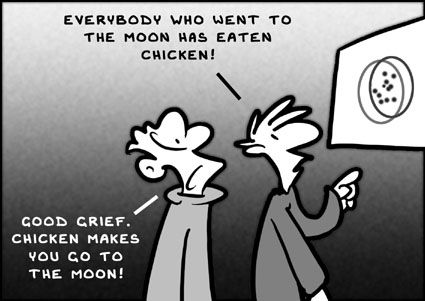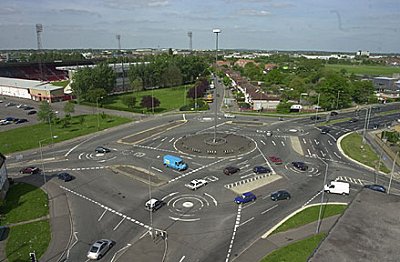Deuxième article de la série sur Cynefin autour de la complexité :
- différences avec la systémique,
- caractéristiques des systèmes complexes adaptatifs,
- gestion des risques,
- différence entre simple et simpliste.
Complexité
Systémique et Complexité

Certaines personnes pensent que la complexité est un sous-ensemble de la pensée systémique alors que c’est radicalement différent.
Toutes les méthodes de pensée systémique supposent que l’on peut définir un état futur idéal et s’organiser pour combler l’écart. Même à la fin du livre « Learning Organizations » de Peter Senge, on définit les valeurs que l’on veut que tout le monde ait : on définit alors un état final et l’on comble l’écart. C’est ce que les agilistes font également la plupart du temps.
La complexité se focalise à décrire le présent, à identifier ce que l’on peut changer, de ce que l’on peut changer à identifier où l’on peut suivre l’impact de ce changement (car on ne peut pas changer si on ne peut pas surveiller), et dans le groupe de choses que je peux surveiller, où il pourrait se produire des résultats bénéfiques ou sinon ce que l’on pourrait en apprendre. C’est donc une approche bien plus économique. On gère le potentiel évolutionnaire du présent ce qui signifie que l’on découvre des futurs plus durables et plus résilients que nous n’aurions pas pu anticiper.
Le fait de les avoir anticipé aurait rendu les choses pires plutôt que meilleures. La complexité est donc une manière complètement différente de penser.
Caractéristiques des Systèmes Complexes Adaptatifs
1. Très sensibles aux petits changements

Dave Snowden évoque le sujet de l’effet papillon : le fait que des petites choses, combinées avec d’autres petites choses peuvent produire de grands effets.
Cela ne signifie pourtant pas que les mêmes petites choses vont produire le même effet autre part.
Le terme est devenu célèbre par l’exemple des battements d’ailes de papillons ayant constitué un ouragan au Texas.
2. Cohérence rétrospective

Ce n’est pas ce que l’on ne sait pas qui vous met dans une situation difficile,
c’est ce que vous croyez avec certitude et qui ne l’est simplement pas.
– Mark Twain
Le fait que cela a fonctionné dans le passé ne signifie pas que ce sera le cas dans le futur. En effet, il est intéressant de voir qu’il est toujours évident pour tout le monde de ce qu’il aurait fallu faire après coup – c’est d’ailleurs ce qu’il se passe lorsque l’on fait un bilan de projet – mais vu que l’on est dans le cas de systèmes adaptatifs complexes, les données changent tout le temps.
Dave Snowden évoque plusieurs exemples à ce sujet :
- L’effet cobra : Suite au nombre grandissant de cobra pendant la période coloniale brittanique, le gouvernement a mis en place un programme de primes pour chaque cobra tué. Même si ce fut une stratégie très efficace au départ, les personnes ont commencé à faire se reproduire les cobras pour obtenir plus d’argent. Le gouvernement ayant eu vent de la manigance a arrêté le programme et les cobras maintenant sans valeur ont simplement été relâchés dans la nature ce qui a au final augmenté leur population. On parle également de l’effet rat.
- « Tout ce qui est nouveau produira toujours de bons résultats les 2 ou 3 premières fois où cela sera utilisé ». Les êtres humains répondent à la nouveauté ce qui ne signifie pas que cela va pouvoir être mis à l’échelle. Il y a un grand phénomène dans la communauté Agile en ce moment, où des personnes mettent en place des méthodes très structurées très rapidement dans une ou deux sociétés et se basent sur cela pour créer des revenus par des accréditations et par de la formation sans pour autant voir si cela va durer. Il est donc important de faire attention aux méthodes qui revendiquent des succès à partir d’un nombre limité de cas.
D’où l’approche de Dave qui est de :
Découvrir ce que l’on sait sur les systèmes et sur la prise de décision humaine de la perspective des sciences naturelles et de construire des méthodes et des outils en se basant sur des théories scientifiques fondées plutôt que sur des observations du passé et un nombre limité de cas. Cela permet également de rejeter des techniques a priori : elles sont fausses car elles font des suppositions fondamentalement mauvaises sur la nature des systèmes ou sur la nature de la cognition.
En réalité, plus on se prémunit des échecs du passé plus on augmente la probabilité des échecs du futur. Cela ne veut pas dire que vous n’en tirez pas de leçons mais vous n’apprenez pas de manière rigide en vous basant sur la compréhension du passé, c’est un processus différent : on tend à parler d’apprentissage de leçons plutôt que de leçons apprises. On a besoin de mécanismes actifs de feedback en temps réel de multiples capteurs humains car cela nous donne le contrôle, cela doit être en temps réel et non basé sur un processus.
3. Proximité et Connectivité

Les personnes dont nous sommes proches influencent fondamentalement qui nous sommes. C’est donc un mécanisme clé de contrôle dans les systèmes adaptatifs complexes. On ne peut gérer qu’un certain nombre de choses mais l’interaction de proximité est une des choses à gérer.
4. Dangers des confusions
Corrélation vs causalité

Le pattern commun est de comparer un grand nombre de sociétés à succès, d’identifier ce qu’elles font et de se dire qu’en faisant de même on obtiendra le même résultat. Le problème est que cela ne prend pas en compte le contexte. L’exemple de Dave Snowden est le suivant :
Si une centaine d’équipes agiles ont un project manager allant régulièrement à la selle, ce n’est pas en basant votre recrutement de project managers sur ses habitudes à aller aux toilettes que vous aurez la garantie de la réussite de vos projets.
Même si l’on associe les déplacements réguliers à la selle avec un faible niveau de stress, il pourrait y avoir un lien mais ce n’est pas un lien causal.
Simulation vs prédiction

De nos jours, nous avons la possibilité d’effectuer toute sorte de simulations par le biais des outils informatiques : par exemple le mouvement d’un groupe d’oiseaux se déplaçant dans le ciel.
Cependant, il ne nous est pas possible de prédire effectivement s’ils vont se déplacer d’un côté ou d’un autre et cette différence peut être significative.
Ainsi, c’est ce désir de déterminisme qui est commun et dangereux.
5. Garder ses options ouvertes

Fondamentalement, une convergence prématurée est le principal danger de la complexité. Converger trop vite sur une solution sans se laisser d’options ouvertes.
On parle ici du shift de la conception unique et sécurisée aux multiples expérimentation Safe-to-fail contradictoires pour empêcher la convergence prématurée.
On peut alors faire un lien avec le concept des options réelles (à ne pas confondre avec les options financières), un outil de prise de décision dans le monde réél stipulant que : les options ont de la valeur (intrinsèque) – cela a donc de la valeur d’avoir de multiples options, les options expirent et qu’il ne faut jamais s’engager trop tôt dans une direction sans savoir pourquoi.
Gestion des risques
Le changement stratégique effectué dans le monde entier en ce moment est de passer de la robustesse à la résilience.
La robustesse c’est « survivre inchangé » alors que la résilience c’est « survivre changé » : on passe par quelque chose dont on ressort différent mais en gardant une cohérence d’identité.
Cognition distribuée

Autour de ce rond-point se trouvent : un terrain de football, les quartiers généraux européens d’Intel, 3 sociétés bancaires, un grand centre commercial, un hôpital régional et une sortie de route majeure. Il ne se bouchonne jamais et possède le plus grand flux de circulation de toute jonction de traffic européenne et le taux d’accidents le plus faible.
En effet, il possède des limites mais qui permettent des comportements émergents. Alors en tant que conducteur entrant dans le rond point, je peux choisir quel chemin prendre en me basant sur le flux de traffic ce qui fait que l’on distribue une grande quantité du processus cognitif aux conducteurs eux-mêmes. Ils ralentissent même lorsqu’ils entrent et font beaucoup plus attention.
Créer un système où les personnes ralentissent et prêtent plus attention du point de vue de la science cognitive est absolument critique. Les êtres humains sont très bons si on les suscite à agir de manière adaptative mais si on ne les mets pas dans un état d’alerte élevé, ils continueront simplement d’agir de manière normale.
Cognition centralisée

Lorsque l’on met en place des feux rouges, c’est la théorie des files d’attente qui se met en oeuvre.
On commence à s’entasser et s’il arrive que les feux s’arrêtent de fonctionner, personne n’arrive à faire face.
La même comparaison avait été utilisée par Bjarte Bogsnes dans sa présentation de Beyond Budgeting que j’avais décrite ici sur le blog de Goood!.
Simple mais pas Simpliste
Il y a un énorme phénomène en ce moment à propos du désir de quelque chose de simple, populaire, facile à comprendre, qui nous donne une formule simpliste. C’est ce que l’on appelle un effet de mode.
Six Sigma est à l’innovation, ce que Sharepoint est à la gestion de la connaissance et ce que SAFe est à l’Agile : un désir de créer quelque chose de très simple, très familier et très structuré pour empêcher les personnes d’avoir à traiter avec la réalité de la vie ou la réalité du changement.
– Dave Snowden
Le fait que quelque chose soit populaire et fonctionne ne veut pas dire que cela durera.
Ainsi, le fait de rendre les choses structurées pour les cadres dirigeants lorsque l’on a besoin qu’ils vivent dans un monde non structuré ne les aide en aucun cas. Cela ne fait qu’augmenter la possibilité de catastrophes considérables en aval. On doit garder l’ambiguité et changer la manière dont on travaille. (cf. Correlation vs causalité)
Conclusion
La théorie de la complexité permet d’ouvrir notre champ de perspective en nous apportant ce regard différent sur le monde. En effet, avec l’accélération technologique que nous vivons, l’incertitude est inévitable et nous nous devons d’apprendre à gérer ce doute plutôt que de tenter à tout prix de l’éliminer. La nuance qu’apporte la complexité à la systémique peut ainsi nous aider à transmettre ce changement de modèle de pensée nécessaire à une innovation poussée des entreprises et à une adaptation constante des équipes.
Les autres articles :
- Partie 1 : Le framework Cynefin
- Partie 2 : Parlons un peu de complexité
- Partie 3 : Quelques notions supplémentaires
Références
- Making Sense of complexity : https://www.youtube.com/watch?v=y6RfqmTZejU
- Simple but not simplistic : https://www.infoq.com/fr/presentations/scrumday-dave-snowden-simple-but-not-simplistic
- Un excellent article de SOAT : http://blog.soat.fr/2014/01/le-framework-cynefin-et-la-gestion-des-connaissances/
- Sagesse des foules : https://fr.wikipedia.org/wiki/La_Sagesse_des_foules
- Strategic Understanding with Prof. Dave Snowden : https://www.youtube.com/watch?v=PFi9mIlp2NY
- Think anew, Act anew : https://www.youtube.com/watch?v=s8SayvnfQi0






